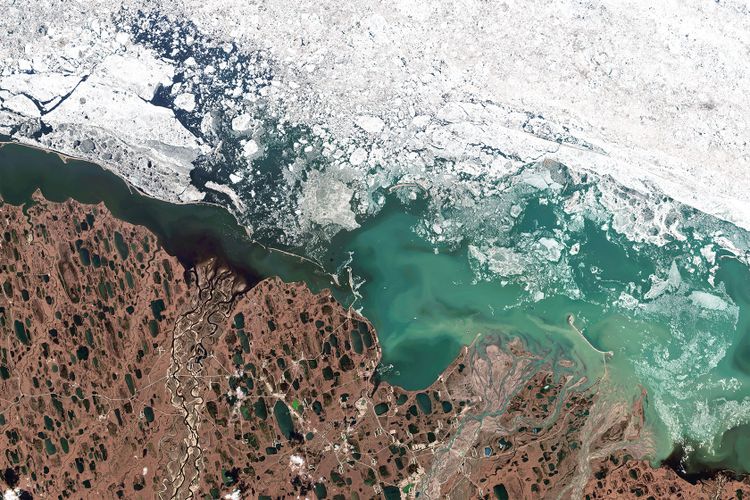After Getting Willow Project Wrong, Biden Must Get These Climate ...

Since taking office in January 2021, President Joe Biden has been a consistent champion for climate action. His administration both set the most ambitious conservation goal of any president by committing to conserving 30 percent of U.S. lands and oceans by 2030 and secured historic investments that are speeding the transition to clean energy and restoring nature.
But the president got it wrong by approving the Willow drilling project. The decision opens up a new frontier of oil and gas development in the remote Arctic while leaving local Alaskan communities vulnerable to serious public health and subsistence risks. Importantly, the work to limit the climate and community impacts of the Willow project and future Arctic expansions is not over, and the ongoing concerns of local communities, including Nuiqsut, must be addressed.
More broadly, in the wake of this decision, the president has ground to make up in order to meet his conservation and climate commitments. While there are no one-for-one tradeoffs to make it right, this column details four near-term opportunities for President Biden to protect public lands and the climate.
1. Factor climate risk into oil and gas decision-makingThe Willow project highlighted how shortsighted the government’s decision-making can be when it comes to drilling on our public lands. Beginning with the decision to lease the Willow area decades ago and culminating in the recent project approval, a deeply flawed system has favored the financial interests of ConocoPhillips over the public interest and allowed climate concerns to be brushed aside. To prevent this mistake from repeating itself again and again, the Biden administration should seize the opportunity to fix a broken system to ensure that it factors in climate risk for federal oil and gas leasing and permitting.
In addition to pursuing programmatic changes, the Biden administration must also ensure that future fossil fuel decisions made on its watch won’t lock the country into an energy future that ignores the climate crisis.
2. Protect other sensitive lands from drilling, mining, and other harm with new conservation designationsOn the heels of the Willow decision, the Biden administration announced that it will begin a rule to increase protections in the Western Arctic, the site of the Willow drilling project and the largest stretch of undeveloped land in the United States. The administration should promptly issue strong regulations that, among other things, cement protections for Teshekpuk Lake and other “special areas” identified for their incredible wildlife habitat and Alaska Native subsistence values. At the same time, it should ensure that future proposals to drill in the Western Arctic are in line with U.S. climate commitments and cannot further erode the president’s climate and conservation legacy.
Beyond this region, President Biden should act quickly on community-led proposals to conserve lands and waters with unique historic, cultural, ecological, and recreation values for the benefit of current future generations. This should include designating new national monuments, creating and expanding wildlife refuges, and withdrawing special lands from future drilling and mining. Namely, it’s time for President Biden to finally protect Avi Kwa Ame, Castner Range, and other lands primed for action, consistent with the promise of his “America the Beautiful” initiative.
3. Conserve the nation’s oldest, carbon-storing forestsBuilding on successful measures, finalized in January 2023, to conserve the Tongass National Forest—the world’s largest intact temperate rainforest—the Biden administration should initiate a climate rulemaking that affords clear protections for old and mature forests. Nearly a year ago, President Biden issued an executive order directing Cabinet members responsible for the nation’s forests to conserve these carbon-storing and biodiversity powerhouses. Now, the administration must act with urgency to establish durable policies and make good on his commitment.
4. Rebalance how public lands are managed to conserve the most treasured placesAn agency little known to some Americans, the U.S. Bureau of Land Management (BLM), oversees 245 million acres of U.S. public lands—including the Western Arctic, where the Willow project will be built. Despite a mandate to manage these lands for the use and enjoyment of present and future generations, roughly 90 percent of BLM lands remain open to oil and gas leasing and development and lack comprehensive rules to guide their conservation. Many of these BLM lands harbor critical wildlife habitat, migration corridors, ancient ruins and sacred sites, fossils, and outdoor recreation assets that remain unprotected from drilling and mining. That needs to change.
Under President Biden, the BLM should balance the scales and ensure that important resources are stewarded for future generations by issuing strong new rules and launching an intensified effort to update regional plans that guide management.
The authors would like to thank Steve Bonitatibus, Jarvis Holliday, Nicole Gentile, and Trevor Higgins for their review and assistance.

















































